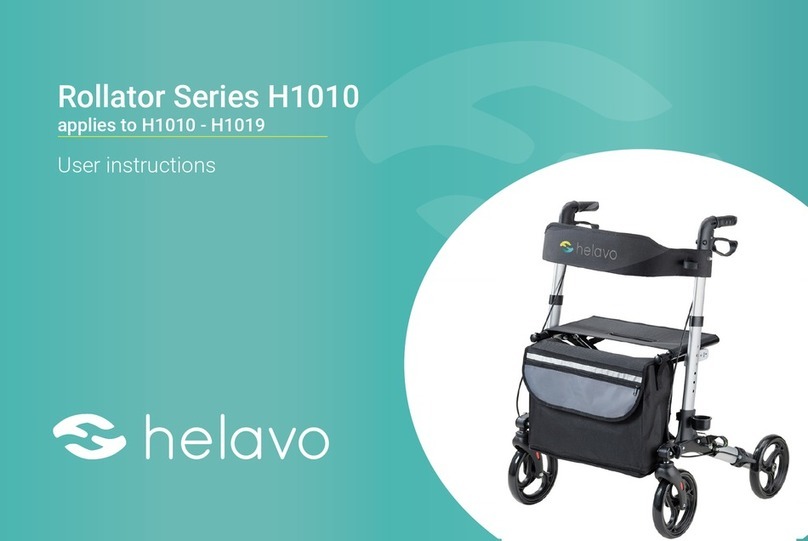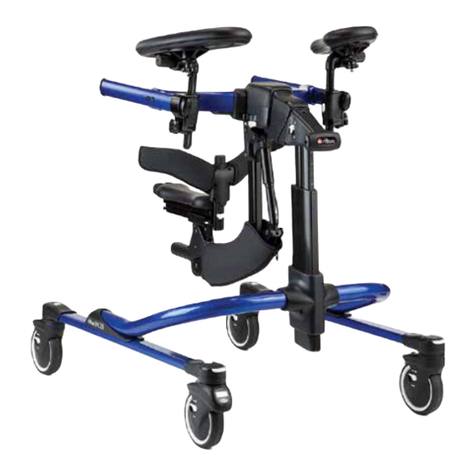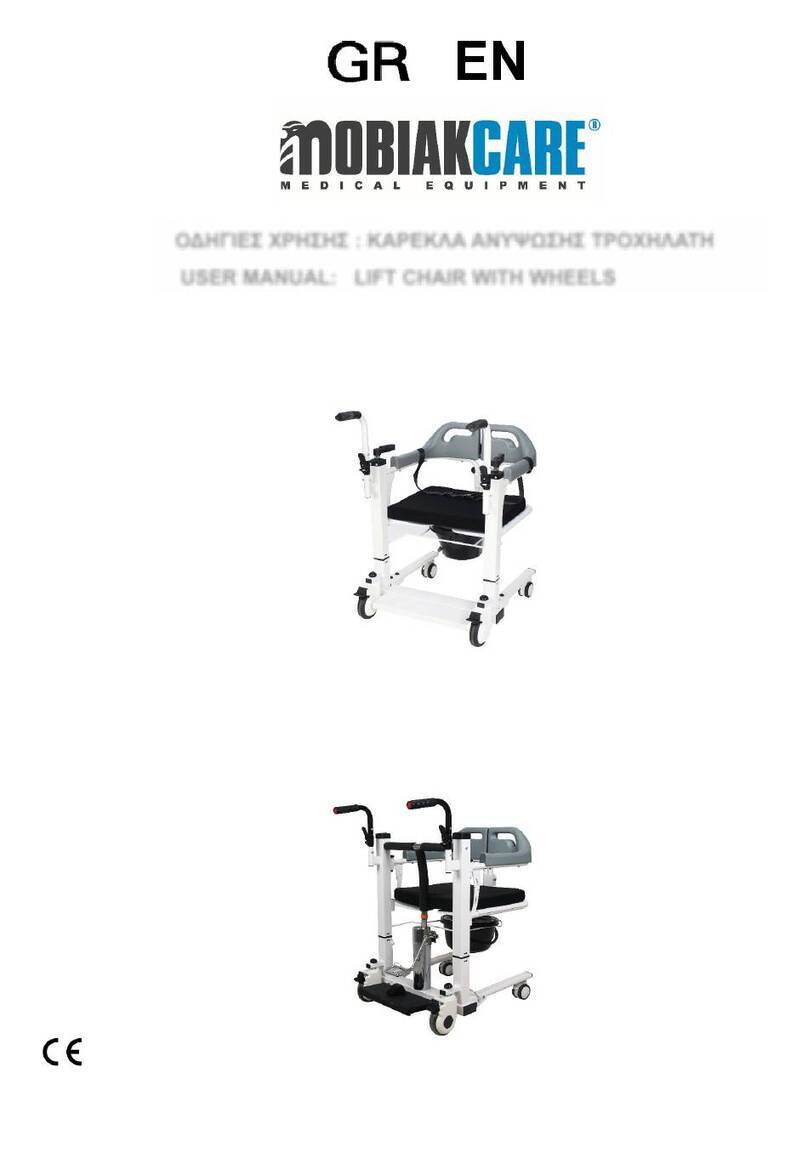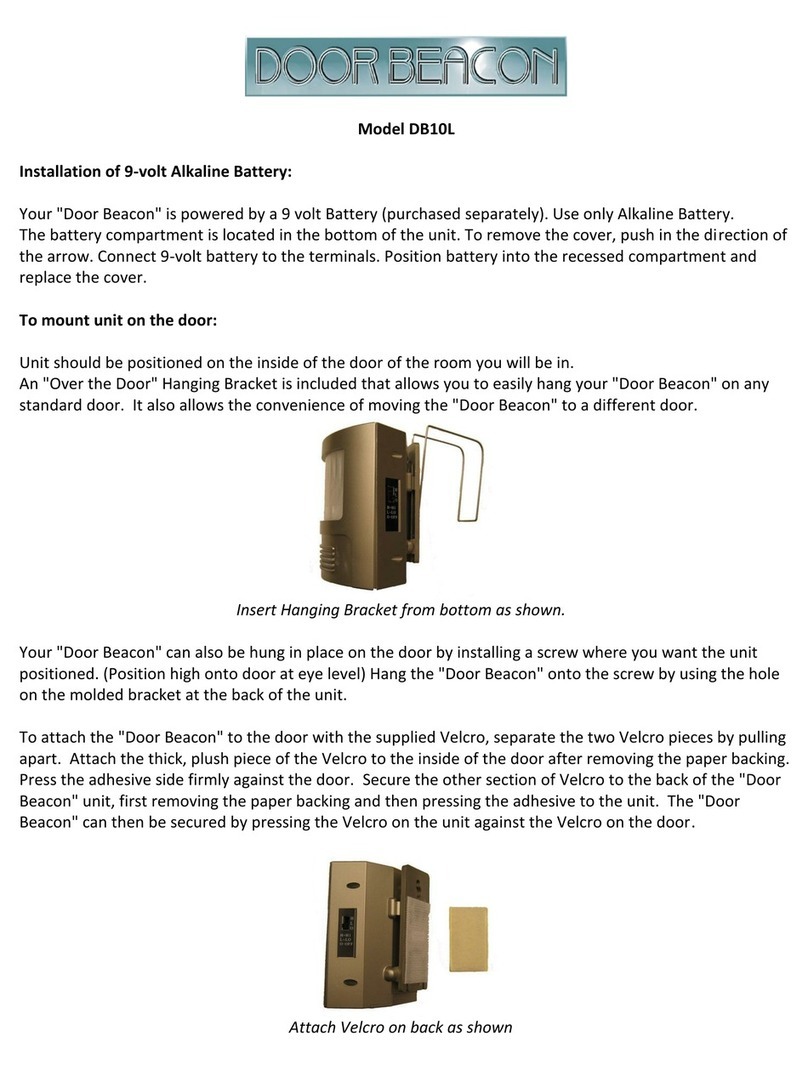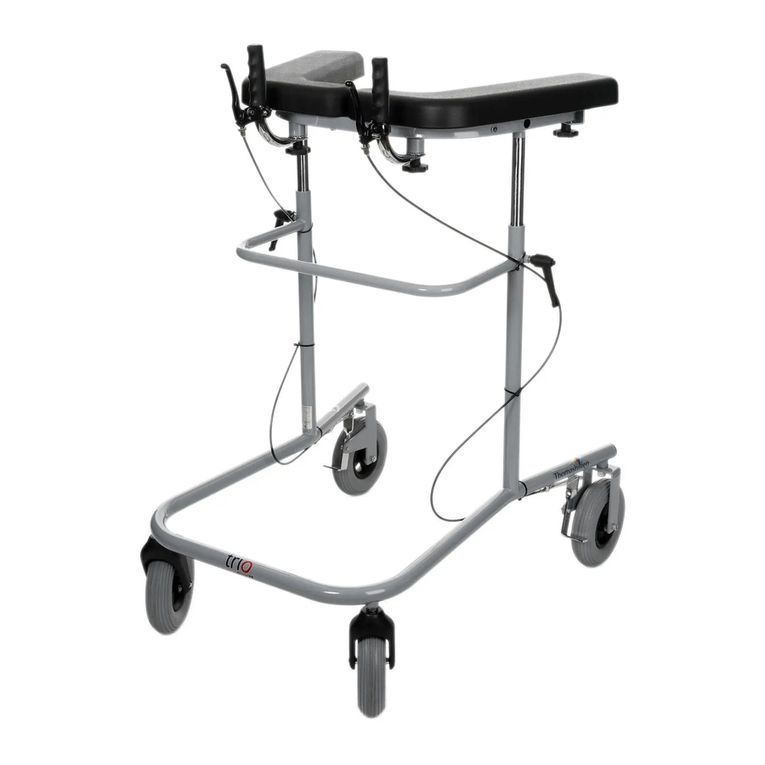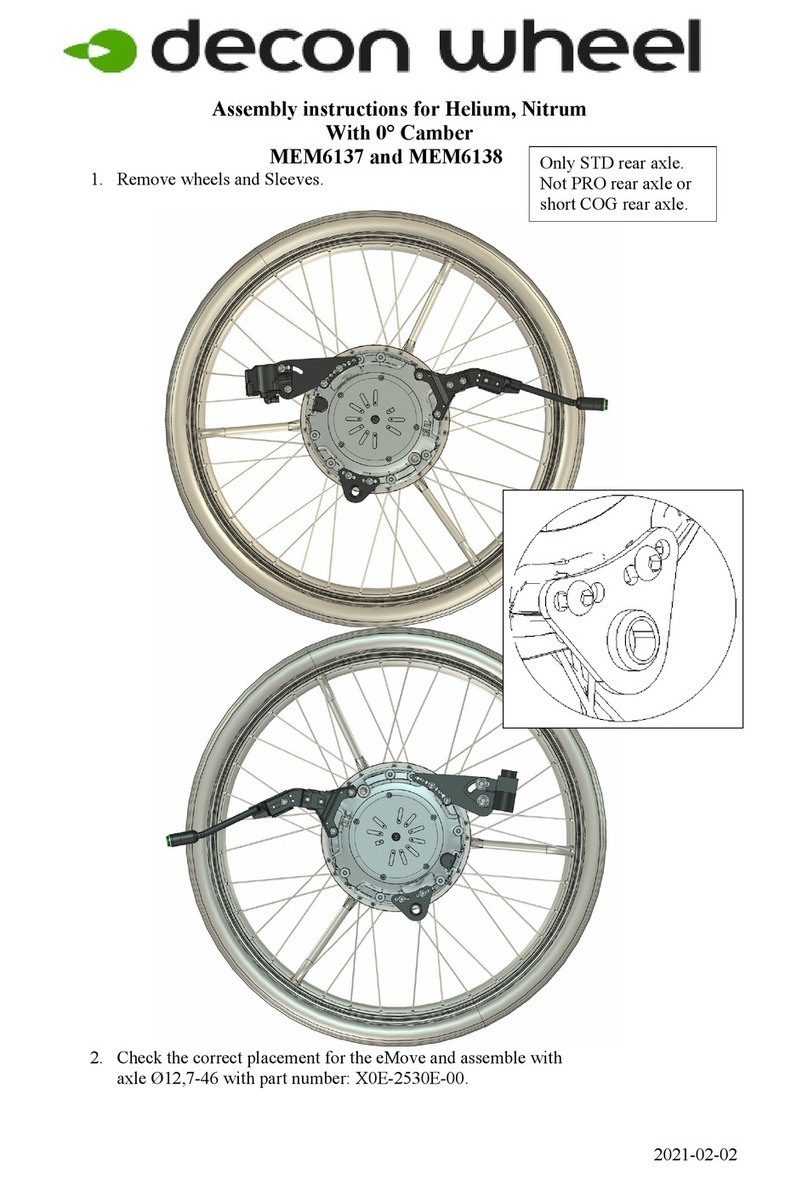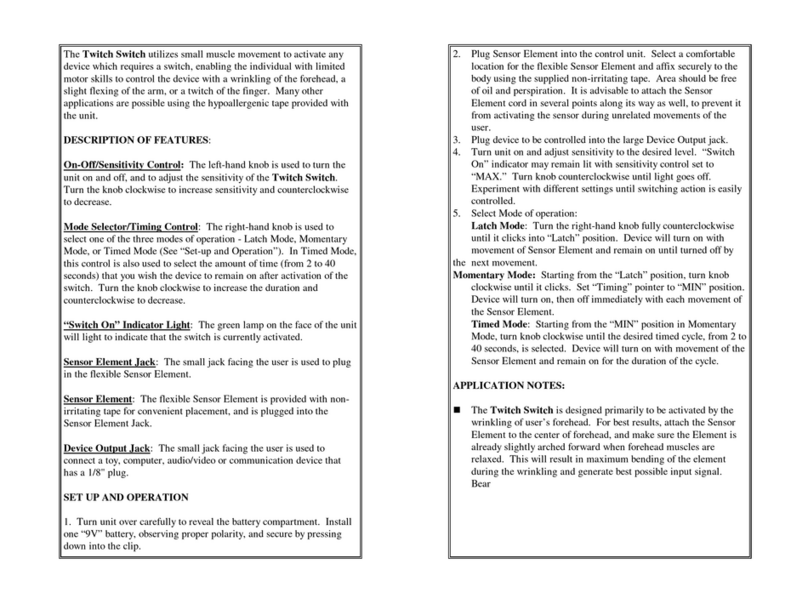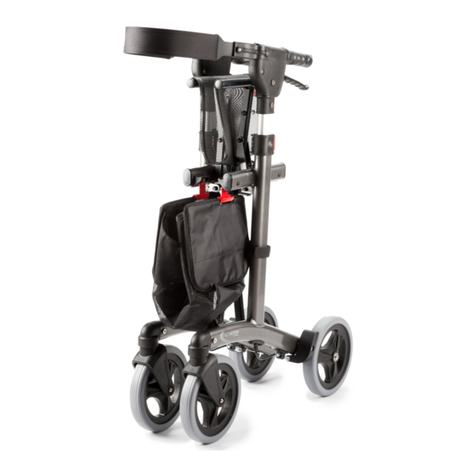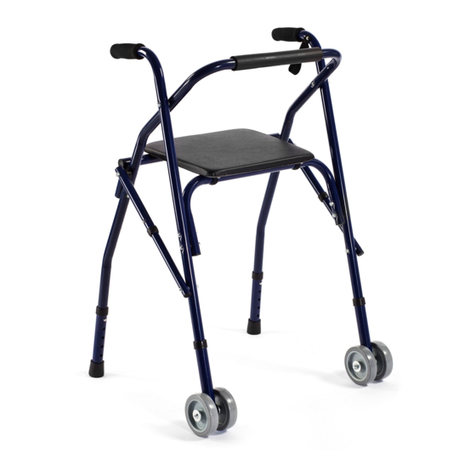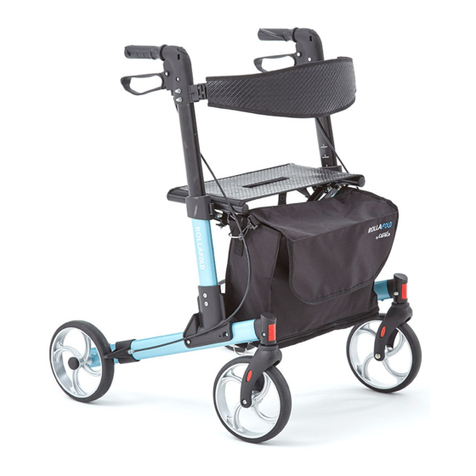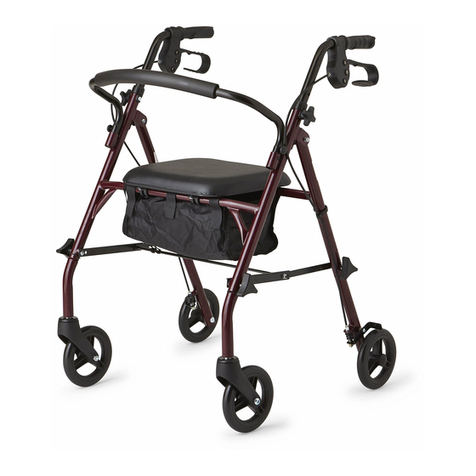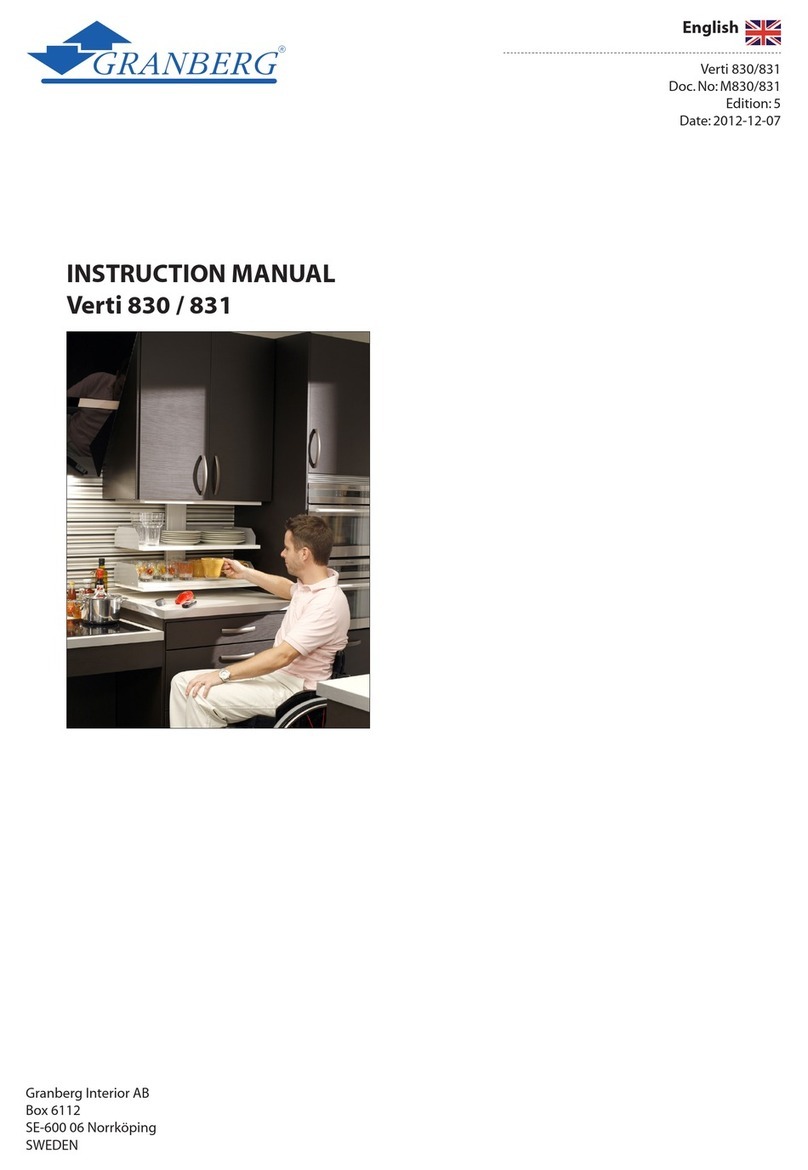Hillrom Liko HygieneSling 40 Manual

Product Description
This instruction guide is valid for Liko HygieneSling
and Teddy HygieneSling, but in the following text we
will only use the name Liko HygieneSling.
Liko HygieneSling has been designed to facilitate
dressing and undressing in connection with lifts to
and from the lavatory. Caregivers often experience
VXFKOLIWLQJRSHUDWLRQVDVKHDY\DQGGLI¿FXOW:LWK
HygieneSling, dressing and undressing can be done
during the actual lifting operation, thanks to the large
opening around the seat of the sling.
Experience has shown that HygieneSling can work
perfectly well for patients wearing long trousers or
skirts and tights (pantyhose).
Liko HygieneSling is easy to apply, even if space
around the wheelchair is very limited.
Liko HygieneSling is often the most appropriate alter-
native for patients with a certain degree of stiffness.
Liko HygieneSling in size XS is made of a Teddy bear
patterned knitted polyester fabric and this is why this
sling is called Teddy HygieneSling. In this size, the leg
supports are reinforced and padded with a teddy bear
patterned warp-knitted polyester fabric.
Slings in sizes S to XL are made of green polyester
and the leg supports are reinforced and padded with
a curduroy fabric. These material combinations apply
to the same sizes in model 46.
The patient should have relatively good torso
stability to be able to sit comfortably and securely in
HygieneSling. For patients with poor muscle tone,
we recommend a smaller size of HygieneSling or
HygieneSling with SafetyBelt, Mod. 45 and 46.
For patients who tend to sink down in the sling, the
safety belt distributes pressure and provides extra
support during the lift. Model 46 is also equipped with
an extra back support.
The patient’s arms must be held outside
HygieneSling Mod. 40 during the entire lifting
procedure, to prevent the risk of sliding out of the
sling.
“Caution!” triangles are used to warn of situations that demand extra care and attention.
In this document, the person being lifted is referred to as the “patient” and the person helping them is referred to
as the “caregiver”.
Mod. 40 Mod. 45 Mod. 46
Before using lifts and lifting accessories, read the instructions for both the sling and the lift that will
be used. Instruction guides can be downloaded, free of charge, at www.liko.com.
7EN160166 Rev. 5
ENGLISH
Liko™ HygieneSling, Mod. 40, 45, 46
Teddy HygieneSling, Mod. 46
/ŶƐƚƌƵĐƟŽŶ'ƵŝĚĞ

2www.hill-rom.com I www.liko.comLiko™ HygieneSling • 7EN160166 Rev. 5
Before lifting, keep the following points in mind:
• A responsible person within your organization should decide on a case-by-case basis whether one or more
caregivers are needed.
• Ensure that the sling selected meets the patient’s needs with reference to model, size, fabric and design.
• For safety and hygiene reasons, use individual slings.
• Before lifting, plan the lifting operation so that it can be done as safely and smoothly as possible.
• Before lifting, check that the lifting accessory hangs vertically and can move freely.
• Although Liko’s sling bars are equipped with safety latches, special caution must be exercised: Before the patient
is lifted from the underlying surface, but after the straps have been fully extended, make sure the straps are
properly connected to the sling bar.
• Make sure the patient is sitting securely in the sling before transferring to another location.
• Never lift a patient higher off the underlying surface than is needed to complete the lifting and transfer procedure.
• Never leave a patient unattended during a lifting situation.
• Make sure that the wheels on the wheelchair, bed, gurney, etc., are locked during the lifting/transfer operation.
• Always work ergonomically.
Safety Instructions
Liko’s products undergo continuous development, which is why we reserve the right to make product changes
without prior notice. Contact your Liko representative for advice and information about product upgrades.
Care and Maintenance
Check the sling regularly, especially after washing. Check the following points with regard to wear and damage:
• Fabric
• Straps
• Seams
• Suspension loops
Do not use damaged lifting accessories. If anything is unclear, please contact the manufacturer or supplier.
Medical Device Class I
Liko HygieneSling has been tested by an accredited testing institute and complies with all the requirements
for MDD Class I products and the harmonized EN ISO 10535 standard.
IMPORTANT!
Lifting and transferring a patient always involves a certain risk. Read the instruction guide for both the lift
and lifting accessories before use. It is important to completely understand the contents of the instruction guide.
The equipment should be used only by trained personnel. Ensure that the lifting accessories are suitable
for the lift being used. Exercise care and caution during use. As a caregiver, you are always responsible
for the patient’s safety. You must be aware of the patient’s ability to handle the lifting situation.
Washing instructions: See the sling’s product label.
/LNRLVTXDOLW\FHUWL¿HGLQDFFRUGDQFHZLWK,62DQGLWVHTXLYDOHQWIRUWKHPHGLFDOGHYLFHLQGXVWU\,62
/LNRLVDOVRFHUWL¿HGLQDFFRUGDQFHZLWKHQYLURQPHQWDOVWDQGDUG,62
Design and Quality by Liko in Sweden
Expected Life Time
The product has an expected life time of 1-5 years with normal use. Expected life time varies depending
on the fabric, use frequency, washing procedure, and weight carried.
Periodic Inspection
The product must be inspected at least once every 6 months. More frequent inspections might be required
if the product is used or washed more often than normal. See Liko’s protocol for Periodic Inspection
for the respective product.

3www.hill-rom.com I www.liko.comLiko™ HygieneSling • 7EN160166 Rev. 5
Lifting from Wheelchair to Toilet
The following description applies to all models (40, 45, 46). If Mod. 45 or 46 are to be used, study the description
DQGLQVWUXFWLRQVIRUVDIHW\EHOWDQGLWVDGMXVWPHQW¿UVW3UHSDUHWRXQGUHVVWKHSDWLHQWE\¿UVWXQGRLQJEXWWRQV
and opening zippers.
Place the leg supports
under the patient’s thighs.
Cross the leg supports by
drawing one leg support
loop through the other.
Move the sling bar forward and con-
QHFWWKHORRSVWUDSV¿UVW0RG
Then connect the upper strap loops,
DQG¿QDOO\WKHOHJVXSSRUWORRSV
Place HygieneSling behind the
patient, with the product label facing
out about halfway down the back.
The soft-padded upper edge should
be just under the armpits.
Mod. 40: Arms on the outside!
Lift up. Pull the patient’s pants
down as far as possible.
Lower to the toilet.
Move the leg supports aside and lower
the patient’s pants even further to enable
better access.
Mod. 45/
Mod. 46 with
extra back support
A B
A. Mod 45/46: Draw right loop strap through left
D-ring. Draw left loop strap through right D-ring.
B. Mod 45/46: Test the appropriate loops by pull-
ing HygieneSling’s upper strap loop and one of
the loop strap’s loops at the same time, as in the
illustration above.
Mod. 40
11
12 13
1
7
4
6
5
2
3
'H¿QLWLRQV
14
10
1. Upper strap loop
2. Serial number
3. Size marking
4. Product label
5. Handle
6. Lower edge
7. Leg support
/HJVXSSRUWORRS
:DLVWEHOW
/RRSVWUDS
11. Inner belt loop
12. Outer belt loop
13. D-ring
14. Back support
15. Label: Periodic Inspection
16. Label: Individual marking (Belongs to)
17. Shortening position
15 16
17
1
7
4
6
5
2
3
15 16
17

4www.hill-rom.com I www.liko.comLiko™ HygieneSling • 7EN160166 Rev. 5
Pull the trousers up as far as
possible towards the crotch.
If an incontinence pad is to be used,
¿WLWLQSODFHEHIRUHWKHWURXVHUVDUH
pulled all the way up. Make the trans-
fer and lower to the chair.
Apply HygieneSling according to the
instructions on page 2.
Connect all of the loops and lift up.
If an incontinence pad is to be used,
¿WLWLQSODFHLQVLGHWKHFURVVHGOHJ
supports.
Pull the trousers right up over the
seat and sling while the patient
is still sitting in HygieneSling.
Lower to the chair.
Disconnect the sling from the sling bar.
Carefully work the leg supports out of
the trousers and remove HygieneSling.
Return from Toilet to Wheelchair
Below, we describe two ways of dressing the patient after the visit to the toilet is concluded.
The most appropriate alternative depends on the patient’s physical condition and clothing.
Alternative 1: Leg supports outside trousers. This is appropriate with non-stretch trousers.
Alternative 2: /HJVXSSRUWV¿UVW±WURXVHUVRXWVLGH7KLVPHWKRGLVVXLWDEOHZLWKVWUHWFKIDEULFWURXVHUV
Place the leg supports under the
legs, but outside the trousers.
Mod. 40: Arms on the outside!
Connect all the loops, and lift up.

5www.hill-rom.com I www.liko.comLiko™ HygieneSling • 7EN160166 Rev. 5
In most cases, and especially in the
case of patients with weak muscu-
lature, the leg supports should be
placed as close as possible to the
crotch.
On a patient with good muscle tone, the
leg supports can be placed closer to the
knees. This makes dressing and undress-
ing easier and helps to ease spasticity.
A sunken and uncomfortable sitting
posture is either a result of the leg
supports being placed too close to
the knees and/or the sling being too
large. Try a smaller size.
Advice for Trial Fitting
The sitting position depends on where the leg supports are placed under the patient’s legs. For someone with
poor muscle tone, they should be placed high up toward the groin so that he/she does not sit too low in the sling.
Patients with poor muscle tone usually sit better in a smaller HygieneSling size. For users with high muscle tone,
the opposite applies. They sit better in a larger HygieneSling, provided that the back support is placed high enough
and the leg supports are close enough to the bends in the knees.
Crossed-over leg supports.
The most common way of applying the sling. One leg
support loop is passed through the other before the
loops are connected to the sling bar.
Only model 45/46: Each leg support connected
separately to the sling bar.
This can be appropriate when lifting patients with
particularly sensitive genitals.
Increased risk of sliding out.
Before a connection alternative is chosen, an individual assessment should be performed to anticipate possible risks.
The following are general advice since the same principles are valid for several sling models.
Different Ways of Connecting Leg Supports
For some patients, e.g. amputees, it may be helpful to
pull the leg support loops through the metal D-rings,
before attaching them to the sling bar. This prevents
the leg supports from sliding forward on the legs.

6
This practical accessory is used to mark the loops that
have been tried out for a certain person. It makes it
easier for the caregivers to choose the right loop to
attach to the sling bar.
Loop Clips
www.hill-rom.com I www.liko.comLiko™ HygieneSling • 7EN160166 Rev. 5
Description of SafetyBelt Mod. 45/46
The loop straps must be crossed and pulled through
the D-rings before the selected strap loop is hung on
the sling bar.
The safety belt provides extra support for patients with poor muscle tone. The belt supports the upper body of the
patient who tends to sink down in the sling during lifting.
However, the safety belt must not be so tightly fastened that it lifts the patient’s body initially; i.e., the safety belt
must not lift before HygieneSling’s upper strap loops begin to lift. If this occurs, it may cause the patient to lean
back inappropriately.
The degree of tension applied by the loop straps
around the upper body depends on which of these
loops is hooked to the sling bar. By test lifting with
different loops at the same time as HygieneSling’s
upper strap loops are used, you can determine
which position gives the right tension. An inner loop
gives more tension, while an outer loop reduces the
tension.
When correctly adjusted, the loop straps provide
somewhat less tension than the HygieneSling’s
upper strap loops.
Adjustment of Loop Straps
Shortening Position
In certain cases, it can be advantageous to shorten the leg support loop in order for the patient to sit well
in the sling. The shortening position can be used temporarily in order to test for the right length, but extended
use may damage the bartacks. If you want to shorten the leg support loop for long-term use, however,
we recommend that you tie a knot in the loop to shorten it about 10 cm (4 in). In this case, it is the outer
leg support loop which should be connected to the sling bar.

7www.hill-rom.com I www.liko.comLiko™ HygieneSling • 7EN160166 Rev. 5
Alt. A: For very thin patients
Pull the loop straps out of the inner belt loops before
drawing them through the metal rings.
This enables maximum tension.
Alt. B: Intermediate size
Pull only one loop strap out of the inner belt loop.
Cross the loop straps and draw them through the
metal rings.
Alt. C: For larger patients
Pass the loop straps through both the inner and outer
belt loops before drawing them through the metal rings.
If necessary, for optimal function, the length of the waist belt can be adapted to the girth of the patient.
Adapt the Length of the Strap to the Patient’s Girth
Helpful hint: To accommodate an even wider girth,
the loop straps can be lengthened with Liko Exten-
sion Loops.
In our wide selection of slings, there are many models that can be used for toilet-related lifting situations.
Please visit www.liko.com for more information. Following is a sampling of possible alternative slings:
Liko HygieneSling with Belt™, Mod. 41
Liko HygieneVest™, Mod. 50
Liko HygieneVest High Back™, Mod. 55
Liko OriginalSling™, Mod. 10/11
Liko ComfortSling Plus with Hygiene Opening™, Mod. 310
Liko ComfortSling Plus High with Hygiene Opening™, Mod. 360
Liko MasterVest™, Mod. 60
Liko MasterVest front closure™, Mod. 64
Alternative Slings for Lifting to and from the Toilet

© Copyright Liko R&D AB 2014
7HGG\+\JLHQH6OLQJ ;6 NJOEV NJ,EV
Liko HygieneSling 3540134 3545134 3546134 S 25-50 kg (55-110 lbs.) 200 kg (440 Ibs.)
/LNR+\JLHQH6OLQJ 0 NJOEV NJ,EV
/LNR+\JLHQH6OLQJ / NJOEV NJ,EV
Liko HygieneSling 3545137 XL 100- kg (220- lbs.) 300 kg (660 Ibs.)
¹Indicated patient weights are just guidelines. Deviations may occur.
²For retained maximum load, lift/accessories intended for the same load or more are required.
Product Prod. No. Prod. No. Prod. No. Size Patient weight¹ Maximum load²
Overview, Liko™HygieneSling Mod. 40, 45, 46
0 Liko HygieneSling
5 Liko HygieneSling with SafetyBelt
6 Liko HygieneSling with SafetyBelt and extra back support
1 Polyester 7HGG\EHDUSDWWHUQHGknitted polyester
354- - -5 Size
Recommended combinations with Liko
HygieneSling and Liko’s sling bars:
6OLQJEDUUHODWHVWR8QLYHUVDO6OLQJ%DU3URG1RDQGDQGDOVR6OLQJ*XDUG
3URG1RDQG
Combinations with Liko Hygiene Sling and Cross-bar, Cross-bar 450/670 or SideBars is not appropriate.
1 Reinforced leg supports
3 Reinforced, corduroy-lined leg supports
Explanation: 1 = Recommended, 2 = May work, 3 = Not advised, 4 = Inappropriate
Combinations
Combinations of accessories/products other than those recommended by Liko can result in risks for the safety
of the patient.
In those cases where another manufacturer recommends Liko’s accessories/products in combination with
their or others’ accessories/products, and the combinations are not approved by Liko, that manufacturer assumes
the responsibility for that combination. Liko then refers to the responsible manufacturer’s instruction guides
and recommendations concerning usage, maintenance, cleaning, checking and inspection of the combination
LQRUGHUWRIXO¿OWKH(1,62UHTXLUHPHQWV
Other Combinations
Liko HygieneSling, Mod. 40, S 1 1 1 2 1 3 4 4
Liko HygieneSling, Mod. 40, M 1 1 1 1 1 3 4 4
Liko HygieneSling, Mod. 40, L 1 1 1 1 1 3 2 2
Teddy HygieneSling, Mod 46, XS 1 1 1 2 2 3 4 4
Liko HygieneSling, Mod. 45/46, S 1 1 1 2 1 3 4 4
Liko HygieneSling, Mod. 45/46, M 1 1 1 1 1 3 3 3
Liko HygieneSling, Mod. 45/46, L 1 1 1 1 1 2 2 2
Liko HygieneSling, Mod. 45, XL 2 1 1 1 1 2 2 2
Slim 350
Standard 450
:LGH
Universal 350
Sling bar 450*
Mini 220
Univ. Twinbar 670
Universal 600
Liko AB
Nedre vägen 100
SE-975 92 Luleå, Sweden
www. hill- rom . com I www. liko .com
This manual suits for next models
3
Table of contents
Other Hillrom Mobility Aid manuals
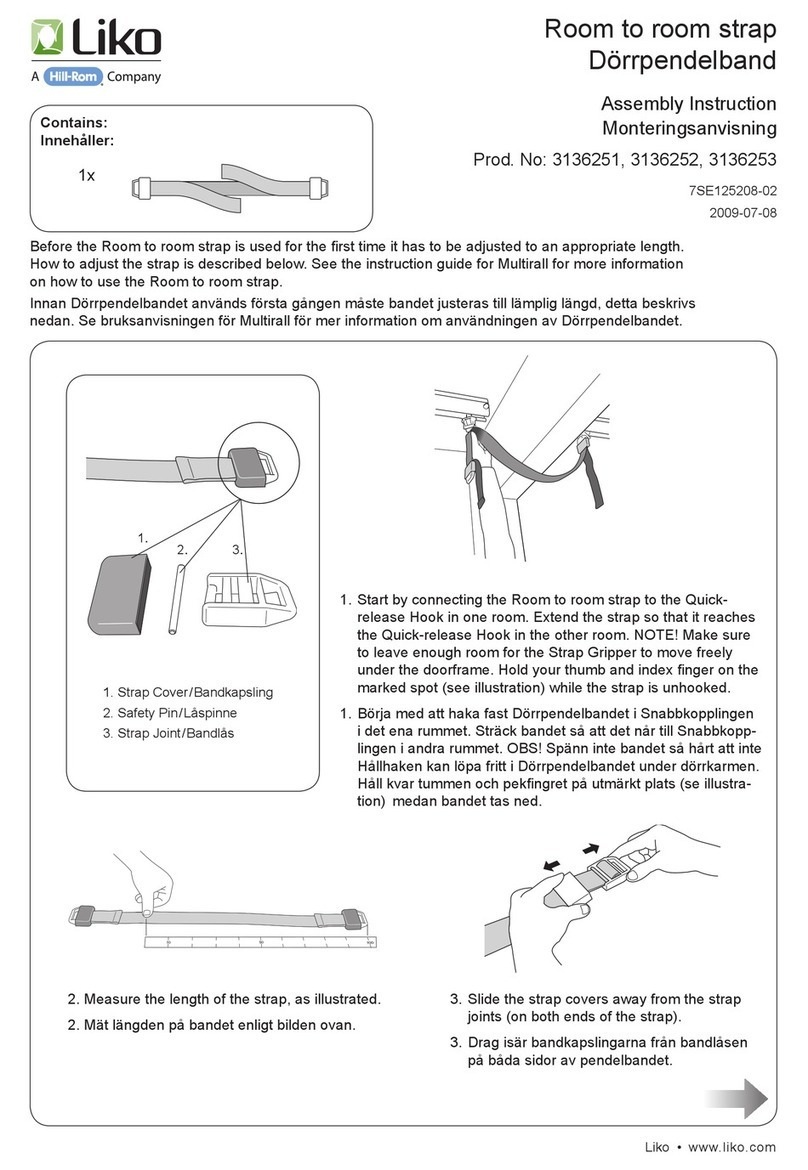
Hillrom
Hillrom Liko 3136251 User manual
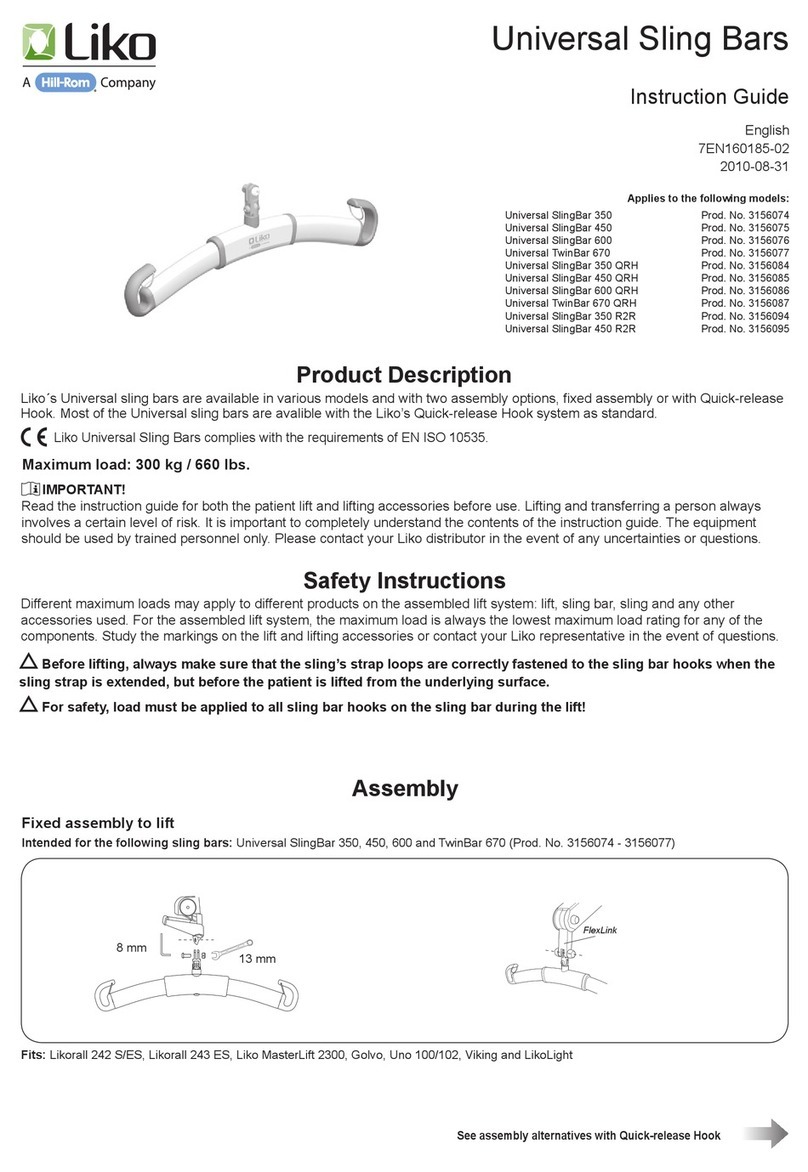
Hillrom
Hillrom Liko Universal SlingBar 350 Manual

Hillrom
Hillrom Liko 31390012 User manual

Hillrom
Hillrom Liko Viking M Series User manual
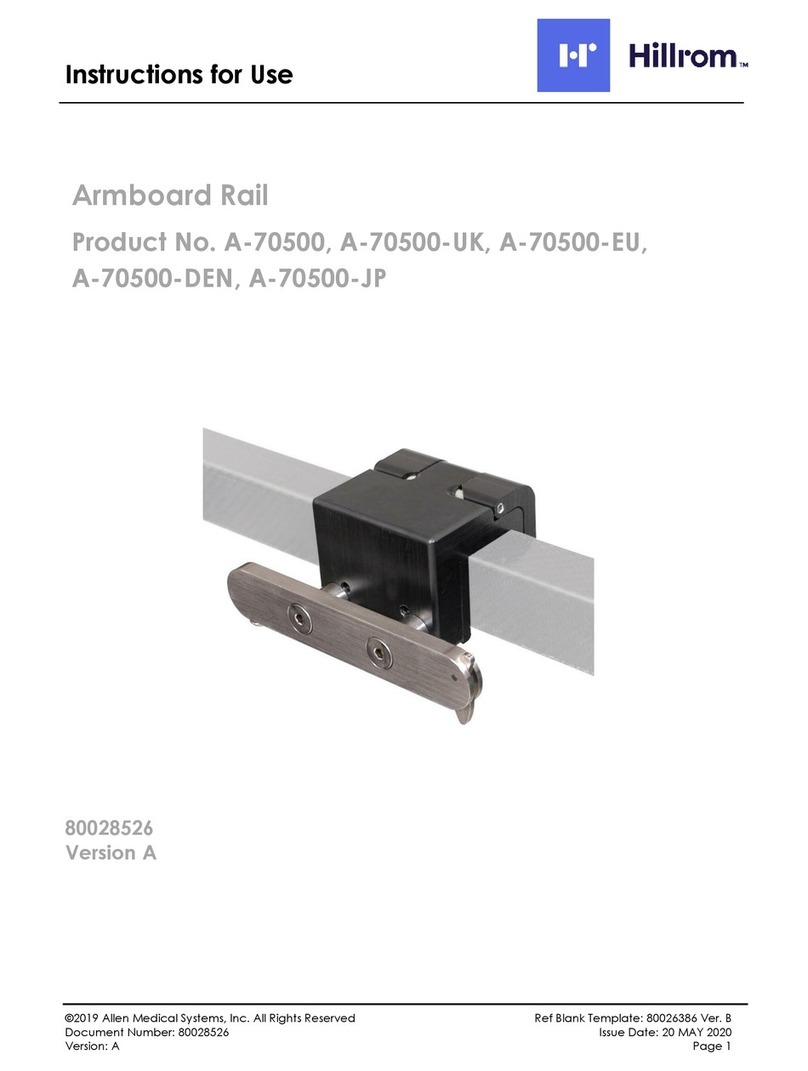
Hillrom
Hillrom A-70500 User manual

Hillrom
Hillrom Liko UniversalSling Manual
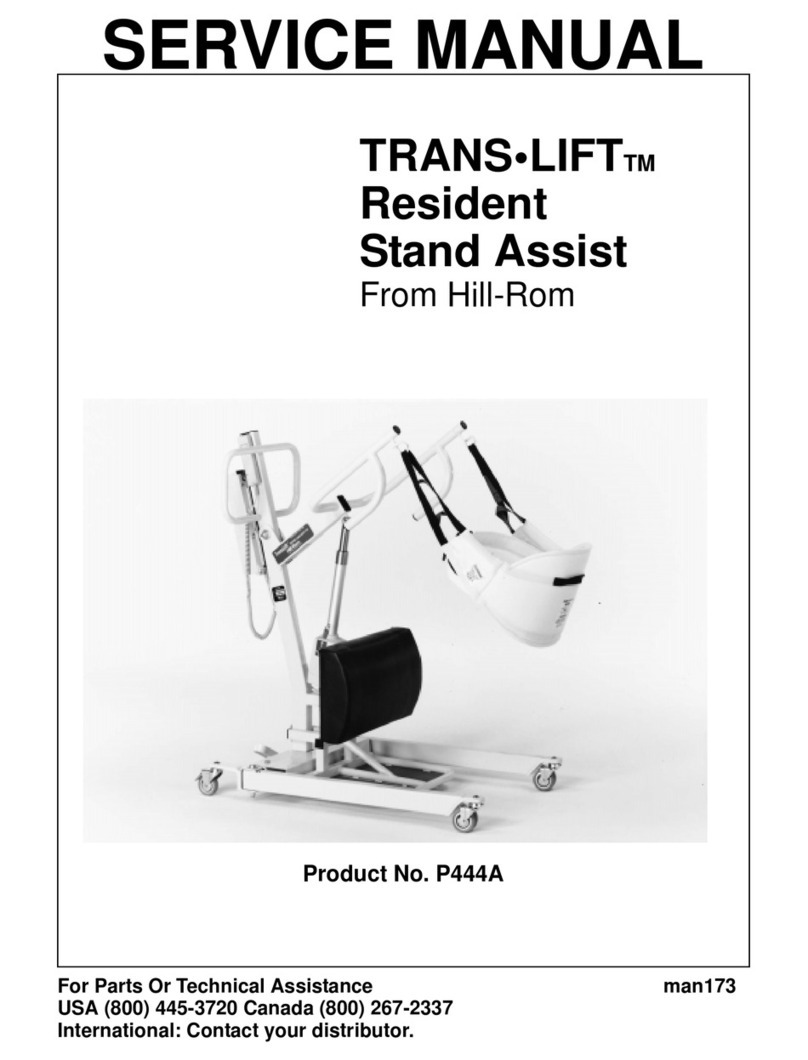
Hillrom
Hillrom TRANS-LIFT Resident Stand Assist User manual

Hillrom
Hillrom Liko 3136006 User manual

Hillrom
Hillrom Liko Ultra LiftPants 920 Manual
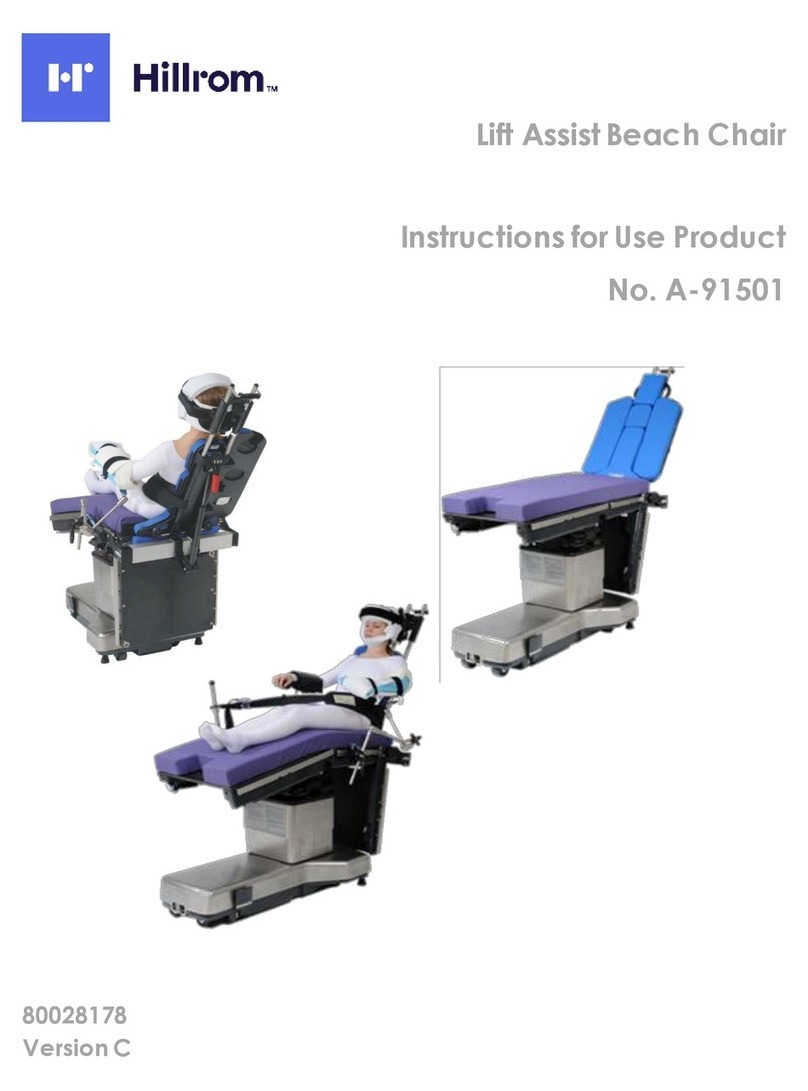
Hillrom
Hillrom A-91501 User manual

